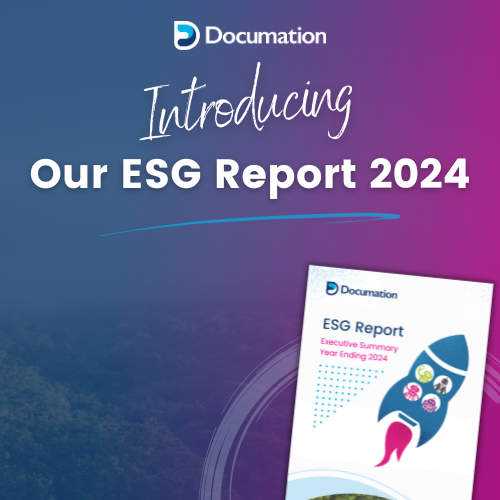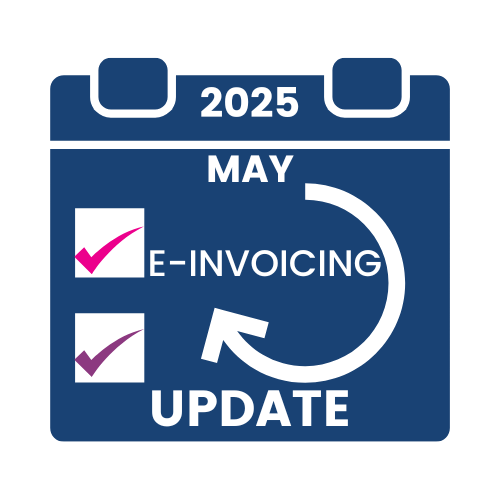“E-invoicing? Oh yes…. We use e-invoicing all the time, most of our invoices come through electronically” …… but is this a true e-invoice?
In this blog, we aim to dispel the myths around e-invoicing solutions and explain why it should be on the roadmap for all businesses.
What is an e-invoice?
It is structured, tax compliant, authenticated invoice data issued from a supplier to a buyer and is the only version of the invoice relevant to the tax authorities and auditors. Whilst paper or other representations of the invoice may exist they are not counted as the legal original.
What is not a true e-invoice?
- A pdf attachment to an email
- Electronic invoices that are not tax-compliant due to lack of integrity, authenticity or legibility
- Fiscal documents not representing a commercial transaction followed by “demand for payment” e.g. waybills
- ‘Electronic invoices’ that are supported by legally relevant paper summary invoices (parts of the EDI world) scanned and printed/archived by recipients
- ‘Asymmetric invoices’ – a means by which buyers can demand a printed invoice and consider it as the legal original invoice
(Definition provided by Billentis)
And why does the difference matter?
According to a Billentis report in 2017, 90% of invoices worldwide are still processed manually. Even where organisations have made progress by receiving invoices as pdf email attachments to reduce paper and processing times, it is not without issues. Detaching the pdf invoice from the email can be problematic. Difficulties arise with zipped attachments, multiple attachments, exception handling attachments that are not invoices, and so on. Once a pdf invoice is successfully separated out the information from it will still need to be extracted – either read and entered by a human or read by OCR technology and potentially corrected. Both methods are a barrier which prevent 100% straight-through, touchless processing.
EDI invoices are a step closer to true e-invoicing but adoption across many industries has been slow and sometimes challenging. Multiple formats, considerable effort required for integration, high setup and transactions costs and the need to create a visual copy of the invoice for processing or audit, are all cited as potential issues. EDI services cater well for some of these problems but may not cover all the bases.
Adopting true e-invoicing will resolve many of the problems found with email and EDI and here’s how:
Instead of the Supplier sending a document (in paper or pdf form) which has to be read and interpreted by the customer, the supplier sends data (often in the form of XML) and therefore no interpretation is needed.
The data may be sent directly to the customer (e.g. by email) or via a third-party network service provider.
The data can be accompanied by a human readable version (e.g. a pdf document) and often a digital signature which guarantees fidelity can also be transmitted.
The end result is 100% accurate transfer of data; what is sent by the supplier is received by the customer.
Because a true e-invoice is received as data and therefore no manual data entry or OCR correction is needed, validation occurs on receipt and successful invoices are passed automatically into the organisation’s ERP or AP Automation system.
This data includes every detail of the invoice header and of every invoice line and is, therefore, the perfect on-ramp for touchless invoice processing making automated matching, for example, much more accurate than alternatives, which may not provide 100% accurate line data.
When considering the above it is no surprise that the take up from both suppliers and customers in e-invoicing is on the increase. But there is a bigger driver for this technology which shouldn’t be ignored.
Global Tax Losses.
In the 2019 10th Edition of Trends in e-invoice Compliance, Trustweaver estimates that VAT accounts for 30% of public revenues and that 20-30% of the VAT due is not collected by governments because of errors or fraud. TrustWeaver states that ’In Europe, the VAT gap amounts to approximately 150–250 billion EUR every year and globally could be as high as half a trillion EUR.’
Governments around the world have recognised that e-invoicing presents the perfect opportunity to start closing this tax gap and, as a result, more and more are mandating that all invoices should be transferred as true e-invoices with many countries adopting a process based on a ‘Clearance’ model. There are multiple ways different Countries deal with the operational responsibility for this model, for example, some are real-time and some time-constrained, but the end-to-end clearance process can usually be summarized into the following main steps:
- the supplier creates the invoice data and sends it to the tax authority in a specified format often with a digital signature, to guarantee authenticity
- the tax administration responds with clearance (or rejection) to the buyer; the response may include a unique identifier, digital signature, time/date stamp or other information
- the buyer typically obtains the invoice via one of two methods:
- the invoice is transmitted to the buyer and the buyer may verify the authenticity of the invoice via the tax authority
- the buyer collects the cleared invoice direct from the tax authority portal
- the buyer processes the invoice
Spurred on by the success of early adopters such as Chile, Mexico and Brazil in closing the VAT gap, more and more tax authorities are mandating e-invoicing.
Within Europe, Italy is now fully compliant, businesses in France with more than 5000 employees have had to be e-invoice capable since 2017, and an upcoming deadline is that all EU contracting authorities and entities are required to be e-invoice ready by April 18, 2019. The NHS started adopting structured e-invoicing in January 2016. Government departments, including the Ministry of Defence and HMRC, use e-invoicing extensively and work is underway to transpose the e-invoicing Directive into UK national law during 2019.
While mandatory e-invoicing is gaining pace worldwide, process models, data formats, authentication methods, archiving rules and other factors vary from country to country.
Roaming Networks
While compliance with global mandates is complex and confusing, any ideas that it is difficult to incorporate e-invoicing into your systems are mis-founded because e-invoicing networks provide a simple solution. They provide a bridge between Supplier and Customer and allow digital format invoices to be transferred, with all the required data, integrated straight into the ERP system whilst managing transmission, authentication and archiving in line with EU country regulations and ensure compliance. Good e-invoice networks also provide ‘roaming’ facilities which ensure that invoices can be transmitted seamlessly even where the supplier and customer are using different network services.
So, if you would like to know how to gain the benefits of e-invoicing and be ready for the arrival of mandates in your trading locations,





